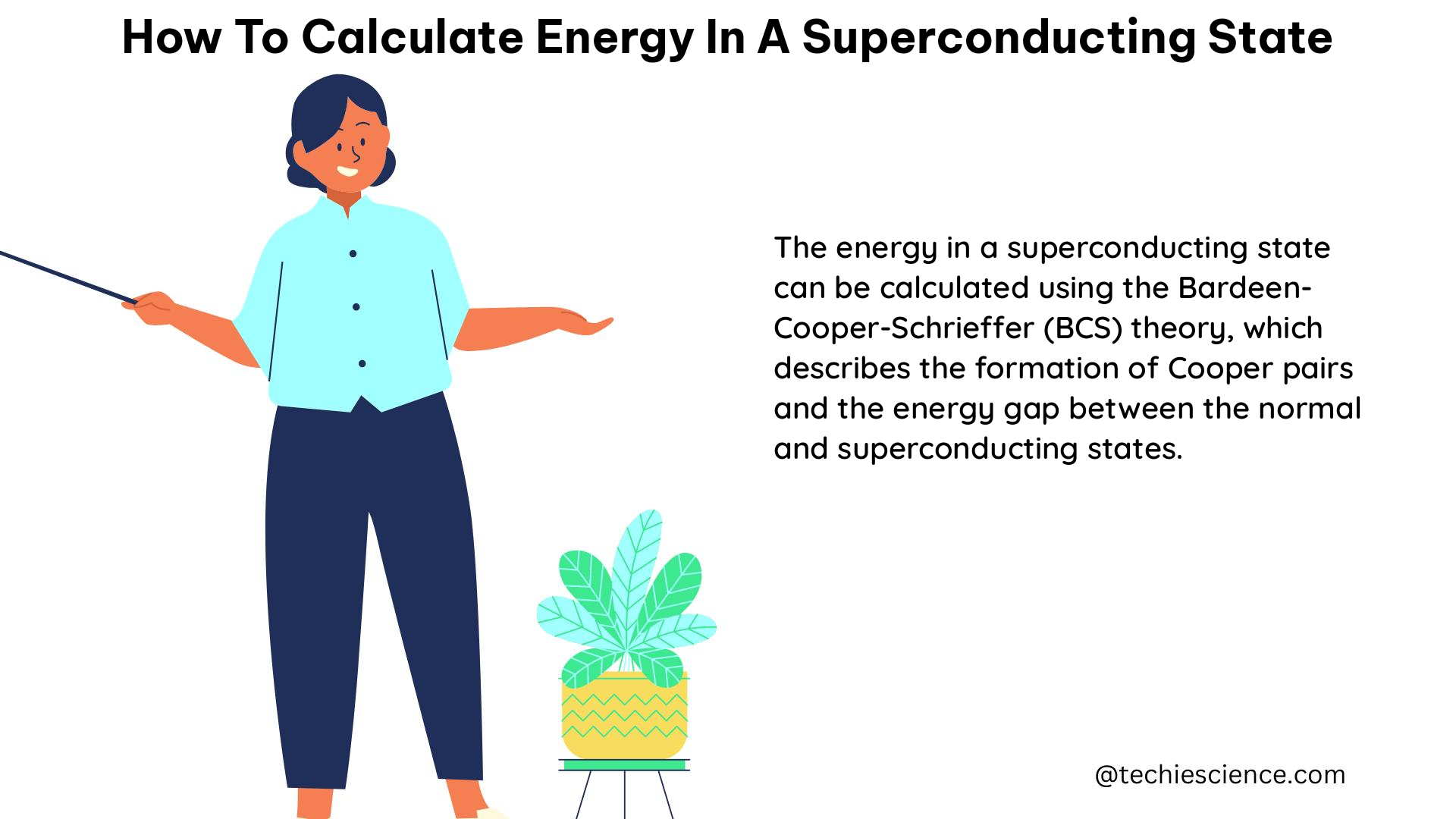Superconductivity is a fascinating phenomenon in the realm of quantum physics, where materials exhibit zero electrical resistance and the expulsion of magnetic fields below a critical temperature. Calculating the energy in a superconducting state involves understanding the fundamental principles of superconductivity and the associated mathematical formulations. In this comprehensive guide, we will delve into the key concepts and formulas necessary to accurately determine the energy in a superconducting state.
1. BCS Theory and the Energy Gap
The Bardeen-Cooper-Schrieffer (BCS) theory is the cornerstone of our understanding of superconductivity. It proposes that superconductivity arises from the pairing of electrons into Cooper pairs, which are bound by the exchange of phonons. The energy gap, denoted as Δ, is a critical parameter in BCS theory, as it represents the energy required to break a Cooper pair.
The BCS gap equation is given by:
Δ = √(2ℏωD / (exp(1/λ) - 1))
where:
– ℏωD is the Debye energy, which represents the maximum energy of the phonons in the material.
– λ is the electron-phonon coupling constant, which quantifies the strength of the interaction between electrons and phonons.
This equation allows us to calculate the energy gap Δ, which is a fundamental quantity in understanding the energy landscape of a superconducting state.
2. Condensation Energy

When a material transitions from the normal state to the superconducting state, the system gains energy, known as the condensation energy. This energy is the difference in the free energy between the two states and is given by:
Ucond = (1/2)N(0)Δ^2
where N(0) is the density of states at the Fermi level. The condensation energy represents the energy gained by the system when it becomes superconducting, and it is an important parameter in understanding the thermodynamics of the superconducting state.
3. Specific Heat
The specific heat of a superconductor is a measure of the energy required to change the temperature of the system. The specific heat of a superconductor is given by:
Cs(T) = γT + (A/T^2)exp(-Δ/kBT)
where:
– γ is the Sommerfeld coefficient, which represents the contribution of the normal electrons to the specific heat.
– A is a constant that depends on the material properties.
– kB is the Boltzmann constant.
This equation allows us to calculate the specific heat of a superconductor as a function of temperature, which is crucial for understanding the thermodynamic properties of the superconducting state.
4. Critical Temperature
The critical temperature, denoted as Tc, is the temperature below which a material becomes superconducting. The critical temperature is given by:
Tc = Δ / (1.76kB)
where kB is the Boltzmann constant. The critical temperature is a fundamental parameter in superconductivity, as it defines the boundary between the normal and superconducting states.
5. Free Energy Difference
The free energy difference, denoted as ΔF, is the difference in the free energy between the superconducting and normal states. It is given by:
ΔF = -(1/2)N(0)Δ^2 + (1/β)ln(1 + exp(-βΔ))
where β = 1/(kBT). The free energy difference is an important quantity in understanding the thermodynamic stability of the superconducting state.
6. Tunneling and Quasiparticle Excitations
Tunneling experiments can be used to measure the energy gap and quasiparticle excitations in superconductors. The energy required to break a Cooper pair is given by:
ΔE = 2√(ξk^2 + Δ^2)
where ξk is the energy of the quasiparticle. Tunneling experiments provide valuable insights into the microscopic properties of the superconducting state.
7. High-Pressure Effects
High pressure can significantly affect the critical temperature and other thermodynamic properties of superconductors. The critical temperature under pressure is given by:
Tc(p) = Tc(0)(1 - p/pc)^(1/2)
where pc is the critical pressure. Understanding the high-pressure effects on superconductivity is crucial for exploring the limits of superconducting materials and their potential applications.
By mastering these formulas and concepts, you can accurately calculate the energy in a superconducting state, enabling a deeper understanding of this fascinating phenomenon in quantum physics. Remember to refer to the provided references for additional details and numerical examples to solidify your knowledge.
References:
1. The Average Kinetic Energy of the Superconducting State
2. Superconductivity Lecture Notes
3. Superconductivity: Basic Concepts and Applications
4. Superconductivity and the Electron-Phonon Interaction
5. Superconductivity: Materials, Properties, and Applications

The lambdageeks.com Core SME Team is a group of experienced subject matter experts from diverse scientific and technical fields including Physics, Chemistry, Technology,Electronics & Electrical Engineering, Automotive, Mechanical Engineering. Our team collaborates to create high-quality, well-researched articles on a wide range of science and technology topics for the lambdageeks.com website.
All Our Senior SME are having more than 7 Years of experience in the respective fields . They are either Working Industry Professionals or assocaited With different Universities. Refer Our Authors Page to get to know About our Core SMEs.